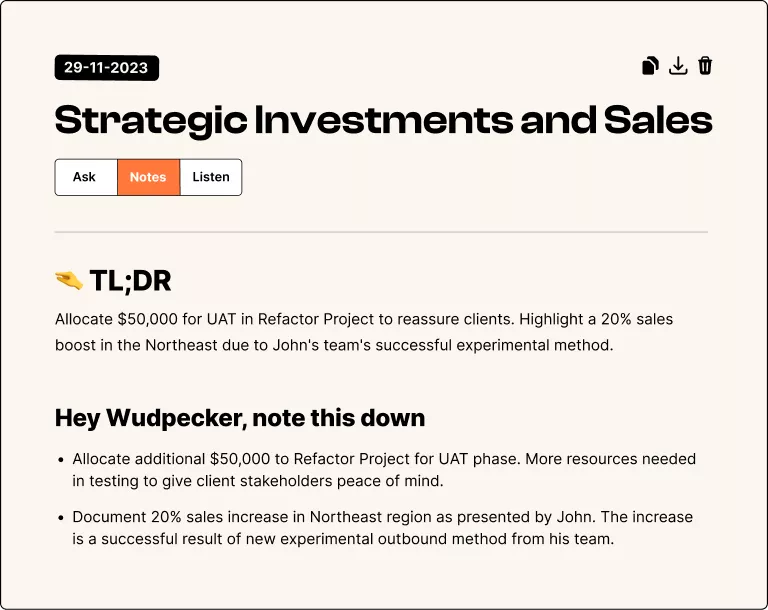Integrating data across systems is critical for B2B SaaS companies, but it comes with challenges. From breaking down data silos to ensuring security and compliance, successful integration improves decision-making, streamlines operations, and enhances customer experiences.
Key Insights:
- Common Challenges: Data silos, synchronization delays, resource-intensive setups, and inconsistent data.
- Solutions:
- Use centralized data warehouses to unify data.
- Implement API-first architectures for smooth data flow.
- Leverage integration platforms with pre-built connectors.
- Enforce strict data governance and quality standards.
- Security & Compliance: Protect sensitive data with encryption, HTTPS, and role-based access while adhering to GDPR and other regulations.
- Scaling for Growth: Design modular, scalable data pipelines to manage increasing data volumes efficiently.
Quick Tip: Tools like Userlens simplify integration by offering pre-built dashboards and actionable insights, helping teams focus on decisions rather than data setup.
Data Integration Challenges and How to Mitigate Them
Data Silos: Problems and Solutions
Data silos create obstacles for making informed, data-driven decisions in B2B SaaS. They limit operational insights and reduce the ability to impact customers effectively.
How Data Silos Form
Data silos often arise due to a mix of technical and organizational issues, including:
- Department-specific tools: Teams using software tailored to their own needs, without considering broader integration.
- Legacy systems: Outdated platforms that aren't built for modern connectivity.
- Rapid growth: Quick adoption of technology without proper planning.
- Security restrictions: Strict access controls that unintentionally block information sharing.
For instance, if product usage data isn't easily accessible, it can delay customer support responses and obscure potential upsell opportunities.
Resolving these issues requires targeted strategies to unify your data sources.
Methods to Connect Data Sources
Breaking down silos involves a mix of technical solutions and organizational adjustments. Here are some effective methods:
1. Data Warehouse Implementation
A centralized data warehouse acts as a single source of truth by:
- Automating data collection from multiple sources.
- Standardizing how data is formatted and stored.
- Synchronizing data regularly.
- Managing access through unified controls.
2. API-First Architecture
Many modern B2B SaaS companies rely on API-first architectures to ensure smooth data flow. Here's a quick comparison:
| Integration Method | Key Benefits | Implementation Complexity |
|---|---|---|
| REST APIs | Easy to set up, widely supported | Low to Medium |
| GraphQL | Flexible queries, reduces overhead | Medium |
| Webhooks | Real-time updates, event-driven | Medium to High |
3. Integration Platforms
Integration platforms help connect disparate systems by providing:
- Pre-built connectors for popular SaaS tools.
- Custom mapping options for unique needs.
- Error monitoring and resolution features.
- Tools to transform and standardize data.
4. Data Governance Framework
A strong data governance framework ensures long-term connectivity by:
- Clarifying data ownership and access permissions.
- Standardizing definitions for consistent data use.
- Enforcing quality control processes.
- Monitoring how data flows and is utilized.
Keeping Data Consistent
Maintaining consistent data is essential for smooth integration, as past issues with data silos have shown. Reliable data is the backbone of effective integration.
Impact of Data Inconsistency
When data doesn’t align across B2B SaaS systems, it can disrupt operations and hinder decision-making. Here are some key problems caused by mismatched data:
Customer Experience Issues
- Errors in billing due to discrepancies between billing and CRM systems
- Outdated contact details leading to failed communications
- Conflicting product usage metrics creating inaccurate customer health scores
Operational Inefficiencies
- Teams spend unnecessary time resolving data discrepancies manually
- Reports become unreliable due to conflicting metrics
- Decisions about resource allocation are made with incomplete data
Revenue Impact
- Missed upsell opportunities because of outdated usage data
- Delayed billing cycles caused by mismatched records
- Higher customer support costs from data-related problems
To address these challenges, it’s essential to enforce strict data quality standards.
Data Quality Standards
Ensuring consistent data requires clear and enforceable quality standards:
1. Data Validation Rules
Set up validation rules at every data entry point to catch errors early:
| Validation Type | Purpose | Implementation Examples |
|---|---|---|
| Format Check | Ensure data follows required patterns | Validate email formats, standardize phone numbers |
| Range Check | Verify values are within acceptable limits | Check user counts, pricing tiers |
| Cross-field Validation | Confirm logical relationships | Ensure start dates precede end dates |
| Duplicate Detection | Avoid redundant entries | Use unique customer IDs, transaction references |
2. Standardization Protocols
Define clear standards for data to ensure uniformity across systems:
- Use consistent field names and formats
- Standardize units of measurement
- Document how data should be transformed
- Automate data cleansing processes
3. Synchronization Framework
Develop a strategy to synchronize data effectively:
- Identify primary data sources for each type of data
- Set sync frequencies based on how critical the data is
- Create conflict resolution protocols to handle discrepancies
4. Error Detection and Resolution
Automate processes to identify and fix data issues:
- Monitor data quality in real time
- Set up alerts for validation failures
- Define workflows to resolve errors
- Conduct regular audits to ensure data accuracy
5. Change Management
Ensure consistency when introducing system changes:
- Document dependencies between systems
- Test data flows thoroughly before making changes
- Prepare rollback procedures in case of issues
- Train teams on how to handle data properly during transitions
sbb-itb-6285ddb
Security and Compliance Requirements
Integrating data in B2B SaaS comes with its own set of security challenges and regulatory obligations. Safeguarding sensitive information while ensuring smooth data flows requires a strong security framework.
Data Security Risks
Data moving between systems is vulnerable to interception, tampering, and man-in-the-middle attacks if left unprotected. Using role-based access controls can help secure additional entry points.
Here’s how you can address these risks effectively:
| Security Layer | Implementation | Purpose |
|---|---|---|
| Encryption | AES-256 for data at rest | Protect stored information |
| Transport Security | Mandatory HTTPS | Secure data in transit |
| Access Management | Role-based controls | Restrict data access |
| Monitoring | Real-time alerts | Identify potential breaches |
Strong security measures are just as important as maintaining data accuracy and quality during integration.
Meeting Data Regulations
Once security risks are addressed, compliance with data regulations becomes the next priority. B2B SaaS integrations must follow rules like GDPR to protect sensitive data.
Here’s a framework to ensure compliance:
- Data Storage Location: Store sensitive information on EU-compliant servers to align with European regulations.
- Encryption Standards: Use AES-256 encryption for stored data and enforce HTTPS for secure transfers.
- Governance Structure: Create a dedicated team to handle compliance audits, monitor data flows, update security protocols, and manage incident responses.
Regularly reviewing platform architecture, data flows, and agreements is crucial for staying compliant with regulations like GDPR.
Building for Data Growth
As B2B SaaS platforms grow, increasing data volumes can slow down performance. A strong data architecture helps avoid bottlenecks and keeps operations running smoothly.
Growth-Related Problems
When data grows, it often creates challenges that can affect system performance and reliability. Here are some common issues and their solutions:
| Challenge | Impact | Solution |
|---|---|---|
| Query Performance | Slower response times as data grows | Use query optimization and caching |
| Storage Costs | Higher infrastructure expenses | Implement tiered storage and archiving |
| Processing Delays | Longer ETL processing times | Switch to parallel processing architecture |
| System Overhead | Greater resource usage | Enable dynamic infrastructure scaling |
Addressing these problems early helps you make targeted improvements to your data pipeline.
Data Pipeline Design
To handle future growth, scalable data pipelines need to be thoughtfully designed. Here are some key principles to follow:
1. Modular Architecture
Build independent components that can scale individually. This makes it easier to upgrade or modify specific parts without disrupting the system as a whole.
2. Asynchronous Processing
Use message queues and event-driven systems to handle data spikes. This approach prevents your system from becoming overwhelmed during busy periods.
3. Smart Data Partitioning
Divide large datasets into smaller, logical chunks to improve manageability and performance. Here's how different partition types can help:
| Partition Type | Use Case | Benefit |
|---|---|---|
| Time-based | Historical data analysis | Speeds up query performance |
| Geographic | Regional compliance | Simplifies data management |
| Customer-based | Multi-tenant systems | Enhances data isolation |
4. Automated Scaling
Set up your infrastructure to adjust automatically based on:
- Current processing demands
- Data volume thresholds
- Query response times
- Storage usage levels
Following these principles makes it easier to manage data growth and ensures your system stays reliable as demands increase.
Userlens: Simplifying Data Integration

The right analytics tool is key to turning data into actionable insights. When data is effectively integrated, it drives smarter business decisions.
Userlens Product Analytics Tools
Userlens is a product analytics tool designed specifically for B2B SaaS companies. It includes features that help teams track and improve data usage:
| Feature | Purpose | Business Impact |
|---|---|---|
| Activity Heatmaps | Visualize user engagement with easy-to-read activity markers | Spot adoption trends and areas of high usage |
| Company-Level Dashboard | Provide a ready-to-use, centralized dashboard for each customer | Monitor engagement across entire organizations |
| Feature Adoption Tracking | Show how users engage with features using clear activity visuals | Guide product updates based on user behavior |
| Churn Risk & Upsell Detection | Examine usage patterns to identify churn risks and upsell chances | Take proactive steps to retain customers and boost revenue |
Userlens delivers a tailored dashboard for each company, removing the hassle of complicated setups. Teams can start gathering insights right after integration, saving time and effort.
Why B2B SaaS Teams Use Userlens
Userlens takes the complexity out of data integration by automating key insights. It enables teams to quickly understand customer behavior and make informed decisions - without the need for time-consuming manual analysis.
Wrapping It Up
Key Takeaways
Integrating B2B SaaS data successfully requires a clear approach: eliminate silos, ensure data consistency, and prioritize security and compliance.
Here are the main focus areas:
- Use standardized data formats for smoother integration.
- Establish strong security measures to protect sensitive information.
- Build flexible data pipelines to handle evolving needs.
- Maintain high data quality across all systems.
Steps to Get Started
Ready to dive into data integration? Here's how to begin:
- Audit Your Systems: Review your current setup to identify integration opportunities.
- Map Your Data Sources: Clearly document all data sources and how they connect.
- Set Data Quality Metrics: Define what "good data" looks like for your business.
- Pick the Right Tools: Choose integration tools that meet your specific needs.
- Monitor and Improve: Regularly evaluate how well your integration is working.
Userlens makes this process easier with pre-built dashboards that show usage heatmaps and track feature adoption - giving you instant insights without the hassle of complex configurations.
Related posts



.svg)



















.svg)
